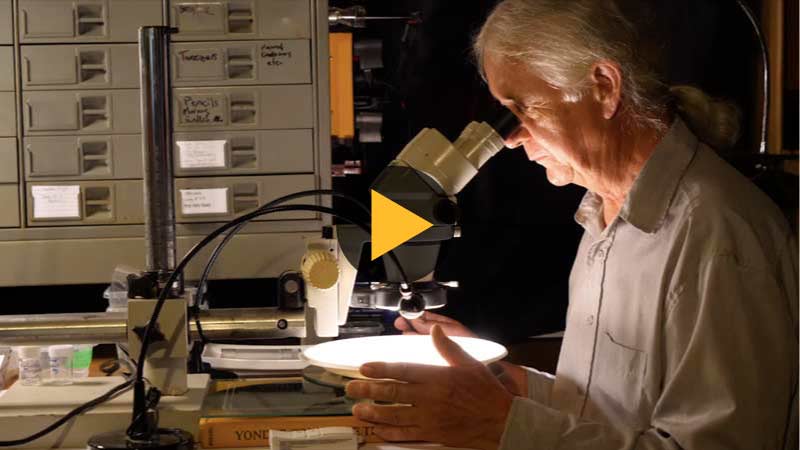The Nipissing Diamond was discovered between 1903-1905 by a local settler, somewhere in or surrounding Cobalt, Ontario. In September, 1906, Father Charles Paradis sketched a life-sized image of the diamond for the Mining Journal, before it was delivered to Tiffany & Co in New York, to be cut (estimated raw stone of +/-800 carats by modern measurements). Tiffany then sent a team west of Timiskaming to search for more diamonds, but to this day, no one has ever found the kimberlite source of the Nipissing Diamond, where it is likely that more large diamonds are hidden underground.

RJK’s discovered nine diamondiferous till and kimberlite discoveries. The Paradis, Robin’s Place, Gleeson, HSM, Lightning Lake, Nicol Lake, and the Gravel Pit discoveries were each originally thought to be native kimberlites, after being examined by RJK’s Geologists and Consultants. This assessment was based on the discovery of significant quantities of diamond inclusion kimberlite indicator minerals (KIMs), and microdiamonds, as well as their emplacements along major, deep-seated faults and cross faults. However, upon further review by Casey Hetman’s Diamond Consulting team at SRK Consultants, the discoveries were renamed as secondary remobilized deposits containing diamondiferous kimberlite material, or in sort, diamondiferous till, likely deposited by a river system located under the last glacial event. The chemistry of the KIMs discovered by RJK differ significantly from the kimberlites found in the 90s, just 15-20km north. Dr. Charles Fipke, who discovered Canada’s first diamond mine, Ekati, noted that RJK’s KIMs seem to originate from a very deep source, which is theoretically where large diamonds are formed. Specifically, RJK has a large amount of diamond inclusion forsterites, which often appear in megacryst form in samples. Dr. Fipke has compared RJK’s geochemistry to the Letseng Mine, in Lesotho, which hosts the highest $/ct diamonds in the world. While the origin kimberlite(s) of this material has not yet been found, Consultants who examined the evidence suggest the source is likely proximal to RJK’s discoveries.
The Company’s search began when RJK signed an option agreement on February 5, 2019, with the well-known local Prospector, Anthony “Tony” Bishop. The contract included the Bishop Nipissing Diamond claims, totaling 2090.2 hectares, located approximately 10 km south of Cobalt, Ontario. Tony spent over 4 years looking for the source of the Nipissing Diamond, and found numerous indicators suggesting unexplained, undiscovered kimberlite sources, originating deep in the earth. Over the past 3 years, the scale of RJK’s search grew into a large land position of over 9,000 hectares of claims, located in a well-established kimberlite field within the Lake Temiskaming Structural Zone. A deep-seated subduction zone is located below the claims, which is an ideal geological setting for type IIa diamonds, the largest diamonds in the world. The indicator minerals found to date, originate as deep as the transition zone 400+ km beneath the earth. The vast majority of the claims are located on high, dry, well-drained topography, ideal for year-round drilling. The crown land contains old logging roads and hunting roads, and most targets are within one kilometer or less, affording easy access. Close by are 3 hydroelectric facilities, a large electric wind farm and a gas pipeline. The Trans-Canada highway is very close; as is the train station in Cobalt, an area with a well-established historical mining history.





